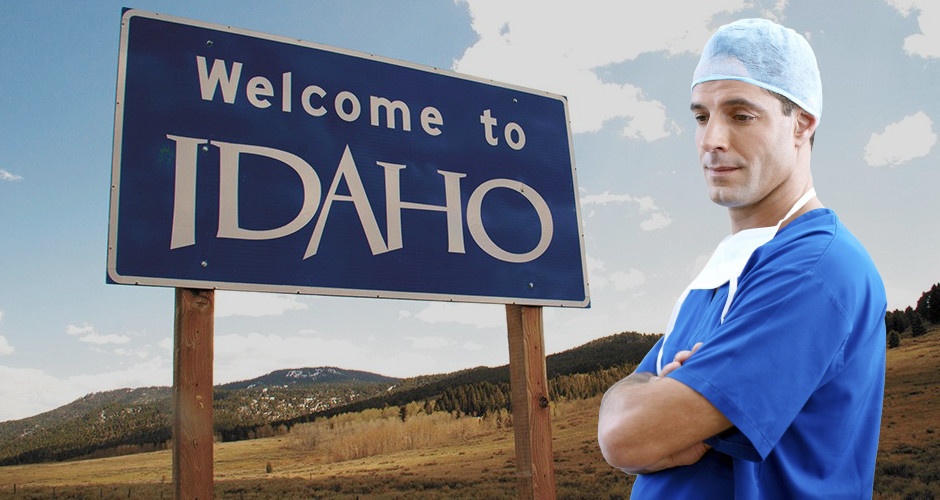As we approach the “peak of the curve” in Idaho and as our Governor will be coming down with his decision about extending “stay in place” policies for the whole State of Idaho early next week I believe a few observations are in order.
First of all, I believe the Governor’s instincts have served the citizens of Idaho very well. He has proceeded in an orderly sober fashion. I am disappointed with the makeup of his advisory committee. Unlike President Trump’s that is made up of Public Health professionals all who have been grounded in clinical medicine prior to their Public Health Service Internal Medicine, Infectious Disease, critical care, and anesthesiology, there are few clinicians on the panel who have recently practiced medicine. Dr. Hahn is a perfect choice serving as a public health specialist—even though she completed her Internal Medicine residency at Michigan All other members are “stakeholders” in special interests that are not necessarily concerned with the interests of patients. We need more actively practicing clinicians and nurses advising the governor, not upper level managers and lobbyists.
I am also comforted by the fact that our Governor will be making this decision himself as a representative of the people. Because of a media that is not skilled in discerning the difference between science and process so many of us have been led to believe that statistics themselves are science Statistics are tools. A chemist uses a scale to way reagents. A carpenter uses a rule to measure. The scale and the rule are tools. They provide information. They aren’t science or craftsmanship that require scholarship, discernment and forming a plan prior to proceeding with an action.
In medicine clinicians, not medical managers or lobbyists are the ones acting on the scene. They are the craftsmen with knowledge. For a rancher like our governor who would only allow for advice from a government bureaucrat to tell him how to manage his land, but in the end make that decision alone because he knows the land better than anyone. Classic Public Health teaching describes three stages of a pandemic and three methods of managing the pandemic. We have seen all three management techniques utilized in the mitigation stage across the world:
- Accelerated “heard” inoculation narrowing the bell shape curve but concentrating clinical cases in a short period of time expending and expunging scarce resources quickly. This would be Italy and Great Briton early on.
- Isolation of whole populations “quarantine” and stay in place “strategies to “flattened the curve”.
- Isolating at-risk patients and coordinating their care proactively should they become infected.
I believe the second type of strategy that was deployed nationwide was appropriate for the second phase of mitigation in most but not all places. I believe the third strategy would be most important in the third stage of mitigation in most places especially in Idaho. Certain hot spots could be identified and second-order mitigation could be continued. Monitoring for localized outbreaks with antigen testing directed at specific areas of concern and maybe for health care workers who also could benefit with serologic antibody testing would be appropriate.
Full population antibody testing is not an emergency and can be carried out during the third and fourth stages of mitigation. It serves a public health and not a clinical purpose. It answer for example the question of when and where heard immunity started to be a factor during the exponential phase of the spread—why did the disease take a different coarse in California and Washington State than in New York City?
Our Governor will be making this decision because in the end, it is a choice that is not just medical but economic in nature and requires the perspective of several different inputs—the medical and public health community being only one. Farmers and ranchers make these types of decisions all the time when deciding when to plant and looking at expected weather and irrigation predications for the growing season. Would you let the weatherman or the irrigation managers be the sole input for your decision? What the land manger brings to the calculous is context and perspective.
So here is the context and perspective that our governor may not be getting from his task force and that a clinician could give him: My information comes from the Idaho Department of Vital Statistics-2018 and the CDC-2017—The Feds are always behind a year or two with their data. Data extrapolated assumes an April 14th peak of cases, and an August 4th asymptote for declining cases.
In Idaho, there are 1,787,000 citizens. As of today there are 1,170 case of COVID-19 infection = .0.00654% of the population. There have been 13 deaths = .000727% of the population
Idaho Deaths on Death Certificates in 2018:
Heart Disease — 3084
Cancer — 3020
Induced Abortion — 1257
Lung Disease — 925
Accidents — 876
Alzheimer’s — 672
Diabetes — 324
Suicide — 392
Flu — 255
Parkinson’s — 206
Today in the State of Idaho, it is estimated that 38 ICU Beds are being utilized for COVID-19 patients and 28 Ventilators are being utilized. During my 30 years of practicing Medicine and Surgery in Idaho, the two ICU’s-Al’s/Luke’s frequently had at least these numbers in their ICUS during the course of a normal day.
Please Governor Little get some clinicians actively prating doctors and nurses, on your team This is a common-sense decision that requires wisdom and judgement and not just data.


